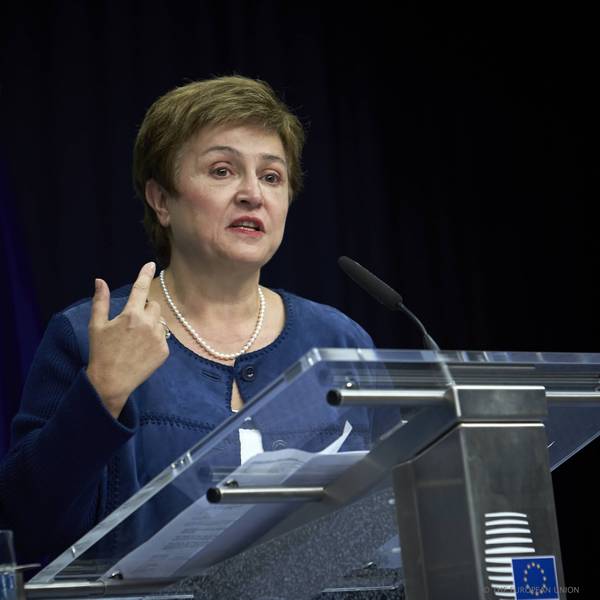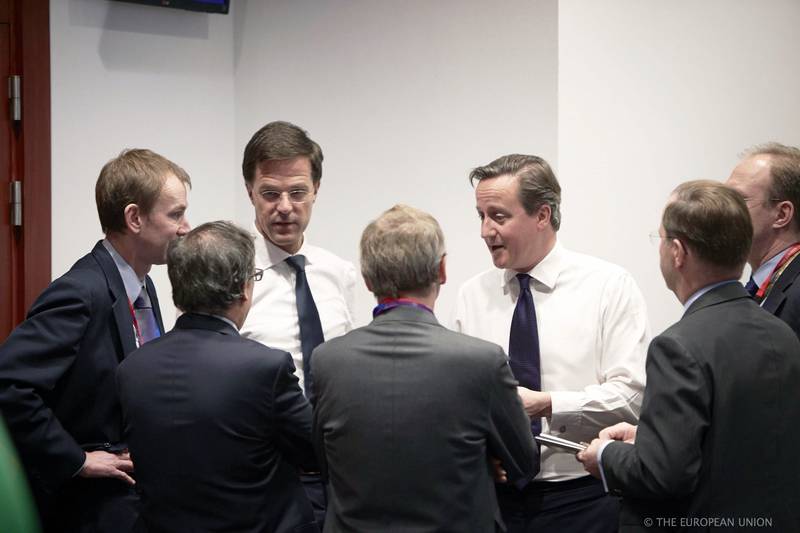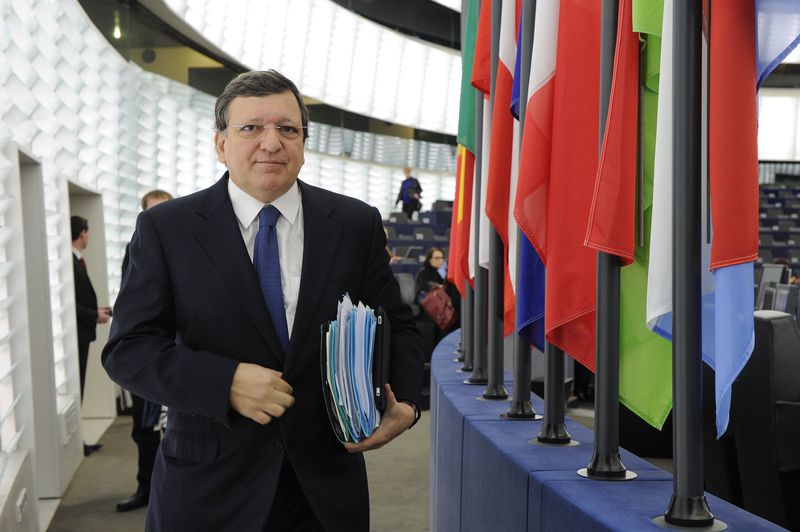Who Benefits from the Cohesion Policy?
Ralitsa Kovacheva, April 9, 2012
 It is inevitable tensions between the expression of solidarity and responsibility in the EU, that crystallised during the crisis, to affect the debate on the next Multiannual Financial Framework (MFF) 2014-2020. It is inevitable countries who are forced to pay for saving their distressed European partners, while being net payers into the EU budget, to insist on spending cuts and at the same time – on stricter rules for more efficient use of EU funds. It is also inevitable countries who rely on the EU funds to catch up with the older and richer member states to push for easer access to more funds. All these dilemmas are clearly visible in the negotiations on the future of the cohesion policy that is unanimously accepted as a European instrument for promoting growth and competitiveness. But, as we know, the devil is in the details.
It is inevitable tensions between the expression of solidarity and responsibility in the EU, that crystallised during the crisis, to affect the debate on the next Multiannual Financial Framework (MFF) 2014-2020. It is inevitable countries who are forced to pay for saving their distressed European partners, while being net payers into the EU budget, to insist on spending cuts and at the same time – on stricter rules for more efficient use of EU funds. It is also inevitable countries who rely on the EU funds to catch up with the older and richer member states to push for easer access to more funds. All these dilemmas are clearly visible in the negotiations on the future of the cohesion policy that is unanimously accepted as a European instrument for promoting growth and competitiveness. But, as we know, the devil is in the details.
In 2011 the European Commission has published its proposals for the next MFF and for changes of the cohesion policy. In general, the novelties are creation of a common strategic framework to manage funds destined for territorial development; the introduction of a new intermediate category of "transition regions", the introduction of macroeconomic conditionality related to compliance with the rules of the EU economic governance; ex ante and ex post conditions to ensure the most efficient use of the EU funds; a performance reserve of 5% to reward the highest-performing programmes; 11 thematic objectives, related to the targets of the Europe 2020 strategy.
Since then, numerous discussions have taken place – a special inter-institutional conference (in June 2011 and March 2012), debates in the Council of Ministers, the European Parliament and at national level in the member states. Among them a group has emerged, called "Friends of the Cohesion policy", to defend the preservation of its size and its use primarily as an instrument of cohesion, as was precisely the initial intent. Thus several controversial questions have been highlighted: Who benefits from the cohesion policy? Should it be an instrument for redistribution or development? How to engage the European citizens more closely, so the resources to become more accessible for the ordinary people?
Some possible answers to these questions are presented in the policy paper "The 'Cohesion Pact': Weathering the Crisis" by Marjorie Jouen. The paper is part of the project "A Test for European Solidarity" of Notre Europe, a think tank founded in 1996 by former European Commission president Jacques Delors. The analysis examines the impact of the crisis on the cohesion policy in search of a balance between solidarity and responsibility and ultimately - its impact on the welfare of European citizens.
The paper gives compelling arguments that while it is directed mostly to the poor regions, the cohesion policy brings significant benefits also to the rich ones, so the net payers have big returns from funds invested in the less developed countries. The Third Report on Economic and Social Cohesion from 2004 states that "on average, around a quarter of structural expenditure returns to the rest of the Union in the form of increased imports, especially of machinery and equipment. This ‘leakage’ is particularly large in the case of Greece (42% of expenditure) and Portugal (35%)."
A study conducted by the Polish Ministry of Regional Development shows that in 2004-2009, about 27% of the funds Poland received returned directly or indirectly to the 15 old Member States (EU15). Germany was the big winner with nearly 2 billion in additional exports. "From each euro spent on the implementation of cohesion policy in Poland, EU-15 countries receive the return of 36 cents in the form of additional export of goods and services [direct benefits], or even 46 cents if we deduct their own payments under cohesion policy from the cost [indirect benefits]." This makes 70 billion euros over seven years, the study shows.
The Cohesion Policy – an instrument of redistribution or development?
Against the trend of concentration of cohesion policy spending in less developed regions (81.5% in the current MFF, compared to 64%, 68% and 71% in the three previous programming periods), while negotiating on the MFF 2007-2013 the net contributors changed the debate’s direction, Marjorie Jouen notes: should the cohesion policy "continue to concentrate funds in the regions lagging behind or support the regions with the highest potential for development, assuming that they will act as a driving force for the others?" Ultimately it was decided the rich regions to be eligible to receive structural funds, as far as 75% of the funding is linked to the priorities of the Lisbon strategy (research and technological development, innovation and entrepreneurship, information and communication technologies, renewable energy, transport, environmental protection, employment and training). Less developed regions should follow the same priorities, but with a lower mandatory rate of financing (60%), which means that they could use the remaining funds for other priorities - such as basic infrastructure, which is especially important for the catching up countries.
This dilemma, however, is still dominating the negotiations on the MFF 2014-2020. Although they support in principle the link between the EU budget and the objectives of the Europe 2020 strategy, the new members are opposed to the strict allocation of funds under the 11 thematic objectives (which are very similar to those of the Lisbon strategy listed above). They also oppose the preliminary setting of minimum funding thresholds (earmarking) by the Commission for different objectives. The new EU members keep pushing for greater freedom to set national priorities related to catching up and cohesion.
But, as the Notre Europe`s paper notes too, "negotiations for the cohesion policy seem to be paralysed by the crisis. The fear of a drastic reduction of the EU budget, in the name of general austerity policy, is on everyone’s mind and makes it difficult to commence discussion on the proposed reforms." The outcome of this situation, the paper states, "would be to revise the different parts of the current proposal while keeping in mind lessons from the past": to clarify the role of the cohesion policy in the next programming period, to give a real European perspective to the budget, while giving to the European citizens the opportunity to participate.
According to the author, the role of the cohesion policy as a development policy should be reaffirmed and a real discussion must start on the model of development Europe wants. And this, according to Marjorie Jouen, must be "a smart, green and inclusive model of development", which, unlike the famous smart, green inclusive growth, as defined by the Europe 2020 strategy, is not measured by gross domestic product. It uses new measures of social progress and well-being, because it is no longer about dealing with the crisis, but ensuring economic, social and territorial cohesion, based on new indicators, Marjorie Jouen argues.
To the traditional factors for cohesion funds distribution, some new criteria must be added like demographic and health conditions of regions, unequal income distribution, education levels, the state of environment. This will give reasons for the creation of new financial tools or methods of intervention and will help the cohesion policy "finally achieve positive results in terms of social cohesion in micro-territories – a goal that it has not really been capable of achieving in twenty years", the paper notes.
The latter is directly related to the third element of cohesion policy`s rethinking, proposed by Notre Europe, the democratic link between the Europeans and the EU. In recent years the cohesion policy`s contribution for the citizens` well-being have become hardly tangible, the policy seems distant and formalised – a conclusion that each one of us feels personally in one way or another. Some of the main reasons for this are renationalisation (the centralised management of cohesion funds at national level) and overly-complicated procedures. It is therefore necessary to simplify the procedures so as to enhance local participation, moreover in a way to make European funds accessible to ordinary project initiators, the paper states. "The contribution of the Union will be most appreciated if it not only plays a distant, financial role in solidarity, but also allows citizens to carry out projects and achieve a collective state of well-being."
This is namely how Europe will be able to talk to the citizens, Marjorie Jouen concludes. Her position provides for an interesting perspective to the problem, as it gives specific (including financial) expression of this phrase often used by politicians, but without clear dimensions. But all the arguments supporting the need for change, submitted by the author - the impact of the crisis, the difficulties of national budgets and the urgent need for economic growth - rather suggest that this big change will not be achieved in the current negotiations on the next MFF.
More or less, the cohesion policy will be used to support national budgets to invest in areas where their own money falls short (large infrastructure projects, research and development, new technologies) and where they do not want to spend money (training and employment programmes). As for the citizens, they will be satisfied if their welfare, though not growing, at least does not fall dramatically and will wait for better times, when Europe has something to tell them and they are ready to hear it.
 Kristalina Georgieva | © Council of the EU
Kristalina Georgieva | © Council of the EU Mark Rutte, David Cameron | © Council of the EU
Mark Rutte, David Cameron | © Council of the EU | © European Parliament
| © European Parliament